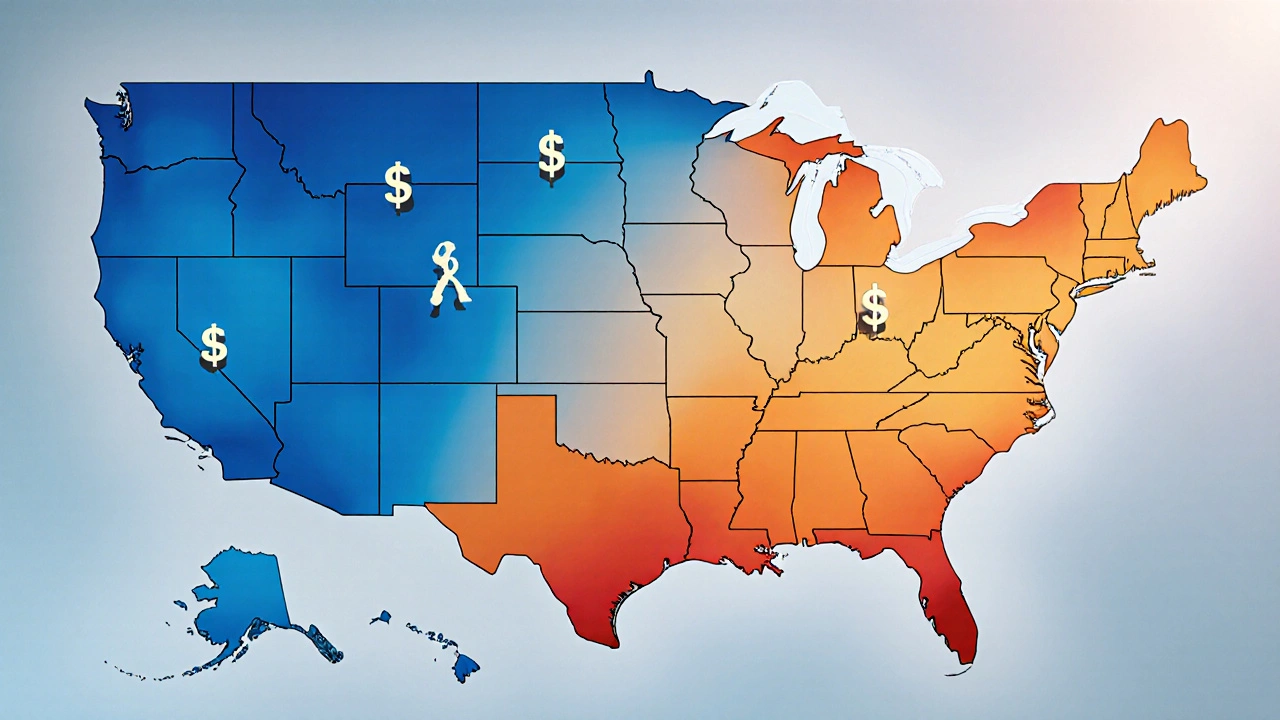Discover which U.S. states provide the lowest IVF costs, why price gaps exist, and how to lower expenses while maintaining high success rates.
Read MoreIVF Affordability USA: Cutting the Cost of In‑Vitro Fertilization
When tackling IVF affordability USA, the effort to make in‑vitro fertilization financially reachable for couples across the United States. Also known as IVF cost reduction, it involves navigating a mix of clinic fees, medication prices, and insurance policies. Another key player is IVF cost, the total out‑of‑pocket amount a family pays for an IVF cycle, which can range from $12,000 to $30,000. Understanding fertility financing, loan or payment‑plan options designed specifically for reproductive treatments and the role of insurance coverage, the portion of IVF expenses that health plans may reimburse are essential steps toward true affordability.
One of the biggest semantic connections is that IVF affordability USA encompasses cost‑reduction strategies. Those strategies require a clear view of IVF cost and the ways insurance can offset it. For example, many states mandate that insurers cover at least one IVF cycle, which directly influences affordability. Another triple: Fertility financing enables families to spread out payments, reducing the immediate financial burden. Finally, the choice of US fertility clinics matters because clinic pricing structures differ based on location, success rates, and bundled service packages.
Key Factors Driving IVF Costs in the US
First, medication makes up roughly 40% of the total bill. Drugs like gonadotropins, GnRH antagonists, and hormone supplements can add $5,000‑$10,000 per cycle. Second, laboratory work—egg retrieval, fertilization, and embryo culture—carries its own price tag, typically $4,000‑$6,000. Third, professional fees for physicians, anesthesiologists, and embryologists vary widely by clinic. Finally, ancillary services such as genetic testing or embryo freezing add optional expenses. By breaking down these components, you can pinpoint where savings are possible.
Insurance coverage can dramatically shift the equation. Some plans cover the full procedure, others only a portion, and many exclude IVF entirely. It helps to ask three critical questions: Does the policy list IVF as a covered service? Are there limits on the number of cycles per year? What pre‑approval steps are required? Armed with these answers, you can negotiate better terms or switch to a plan that offers stronger reproductive benefits.
Financing isn’t just a fallback; it’s a proactive tool. Specialized fertility loans often feature low interest rates and flexible repayment periods, tailored to the length of treatment. Some clinics partner with lenders to provide in‑house payment plans that start immediately after the first blood draw. Crowdfunding platforms also let friends and family contribute directly to the treatment fund, turning community support into a tangible financial resource.
Choosing the right clinic can feel overwhelming, but a few data points make it easier. Look for clinics that publish transparent pricing tables—avoid hidden fees. Compare success rates per age group, not just overall numbers; a higher success rate often means fewer cycles needed, cutting total cost. Finally, consider clinics that offer bundled packages, which bundle medication, monitoring, and embryo storage at a single reduced price.
Geography plays a role, too. Clinics in high‑cost living areas—like California or New York—typically charge more than those in the Midwest or South. Telehealth consultations for initial assessments can reduce travel expenses, and some labs ship medication directly to your home, saving on pharmacy markup.
Beyond the money, there’s the emotional cost of uncertainty. Knowing you have a clear financial roadmap can ease stress and let you focus on the treatment itself. Create a budget worksheet that lists every expected line item, then cross‑check it with insurance statements, financing offers, and clinic quotes. Updating the sheet after each cycle helps you track actual spending versus projections.
In short, achieving IVF affordability in the USA isn’t about a single hack; it’s about combining smart insurance navigation, strategic financing, and informed clinic selection. The articles below dive deeper into each of these pillars—how to negotiate with insurers, which financing options earn top ratings, and real‑world case studies of couples who lowered their IVF spend by up to 30%. Explore the collection to arm yourself with actionable steps and make your path to parenthood financially sustainable.





